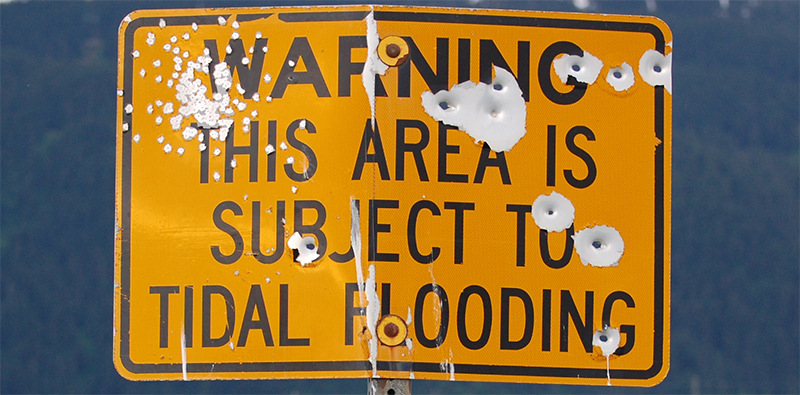Beachfront Site Keeps Washing Away? FEMA Calls Area “Low Risk,” OKs Condos

(uconnn)
That’s why flood insurance exists. The National Flood Insurance Program (NFIP) provides that insurance, and they use FEMA’s flood risk maps to set their rates. You might guess that those FEMA maps would say that a low-lying beachfront luxury condo development in an area that’s flooded several times before would be considered high-risk. And yet as NBC News reports, you’d be wrong.
Generally speaking, properties with outstanding mortgages located in high-risk areas are required to carry flood insurance. In general, the system does work about the way it sounds. If you build on the banks of a river that’s known to overflow every couple of years, your federal flood insurance rates are going to be sky-high. If you live 20 miles from the nearest body of water and your house is on top of a hill, then your flood risk is probably a lot lower, and flood insurance for you is both optional and cheaper.
In 2012, Congress passed an act calling on FEMA and other agencies to reform the NFIP. Among the changes, insurance rates for properties in particularly high-risk zones are supposed to increase to match the “true flood risk.” This is where all those supposedly low-risk low-lying beachfront condo developments come in.
As NBC found in their analysis, FEMA has rewritten their maps to place over 500 coastal properties into lower-risk zones. Among the properties that have been marked as lower-risk are buildings that have flooded in storms before.
Although there are remapped properties (interactive map) in almost every coastal state nationwide, NBC points to one particularly egregious example along the Gulf Coast in Alabama.
The resorts of Gulf Shores and Orange Beach in Alabama “include a stretch of beach that was flooded by Hurricanes Erin and Opal in 1995, Danny in 1997, Georges in 1998, Ivan in 2004, and Katrina in 2005,” NBC says. The flooding from Ivan was the worst, when 14 feet of water slammed into the area, destroying buildings and causing flooding up to a mile inland.
That beach area in Alabama, logically, was classified as being at very high risk from a storm surge. But “was” is the operative word there. Now, it’s not:
Nearly all of the condominium towers are no longer in that high-risk zone, including a 17-story condominium built where the old Holiday Inn was wiped away by Ivan’s winds and waves, and another where the McDonald’s was a total loss. From 2011 through 2013, FEMA granted applications remapping 66 out of 72 waterfront condo towers in Gulf Shores to lower-risk flood zones or off the flood maps entirely. Four others have applications pending. Just two applications have been denied. And next door in Orange Beach, the map lines have been redrawn around four high-rise condo buildings.
Property owners benefit hugely from having their buildings placed into lower-risk categories. One building’s condo association collected over a quarter million dollars in insurance from Ivan. Formerly, they paid over $143,000 annually into the NFIP. Since the reclassification, NBC says, their premium is down to just over $8400 a year–a 94% drop.
Another condo building nearby, that collected just shy of $890,000 in damages from Ivan, has seen its rate drop 97%, from about $218,000 annually down to $6845.
Individual homeowners, who can have trouble with flood insurance, aren’t the ones benefiting. NBC says that nearby owners of single-family homes are paying up to $12,000 a year in flood insurance premiums, “as much as several large condo buildings combined.” Nearly all of the recently-exempted properties NBC found are either large commercial developments, or the multi-million-dollar second homes of the fabulously wealthy.
The changed risk assessment also affects how people build, an expert told NBC News. When a property in an area prone to flooding is considered at low risk, the owners may not build for flood conditions and so end up with an even higher chance of having their properties completely wiped out when the water rises.
The difference between premiums collected and damages paid has to come from somewhere, of course, and that “somewhere” is from elsewhere in the great morass of the federal budget. The NFIP currently has a deficit of $24 billion. The increased rates resulting from the reform act of 2012 were supposed to help dig the program out of that hole, but if high-risk properties are paying low-risk rates, that’s not going to happen.
Why Taxpayers Will Bail Out the Rich When the Next Storm Hits [NBC News]
Want more consumer news? Visit our parent organization, Consumer Reports, for the latest on scams, recalls, and other consumer issues.

